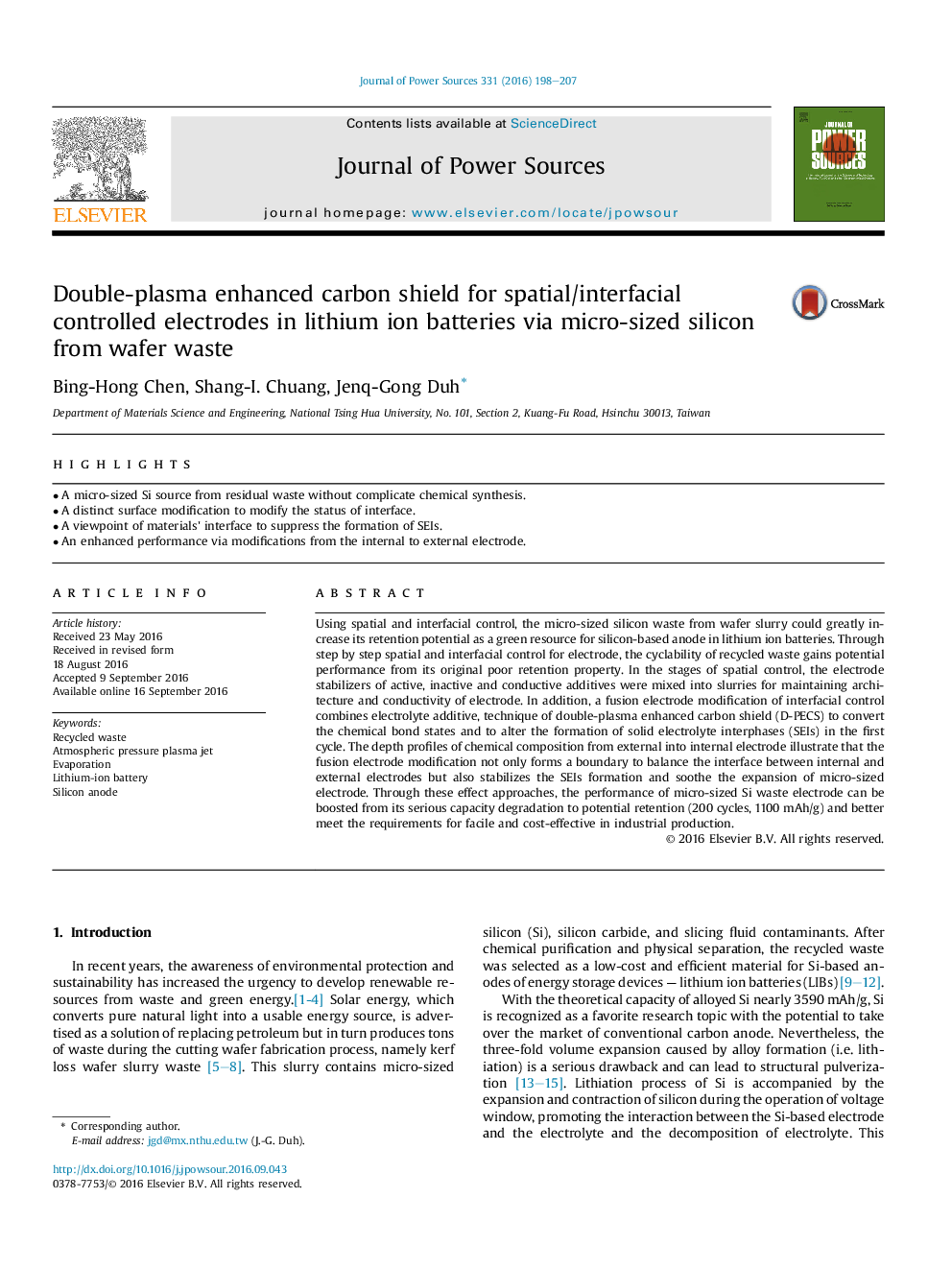| Article ID | Journal | Published Year | Pages | File Type |
|---|---|---|---|---|
| 5150178 | Journal of Power Sources | 2016 | 10 Pages |
Abstract
Using spatial and interfacial control, the micro-sized silicon waste from wafer slurry could greatly increase its retention potential as a green resource for silicon-based anode in lithium ion batteries. Through step by step spatial and interfacial control for electrode, the cyclability of recycled waste gains potential performance from its original poor retention property. In the stages of spatial control, the electrode stabilizers of active, inactive and conductive additives were mixed into slurries for maintaining architecture and conductivity of electrode. In addition, a fusion electrode modification of interfacial control combines electrolyte additive, technique of double-plasma enhanced carbon shield (D-PECS) to convert the chemical bond states and to alter the formation of solid electrolyte interphases (SEIs) in the first cycle. The depth profiles of chemical composition from external into internal electrode illustrate that the fusion electrode modification not only forms a boundary to balance the interface between internal and external electrodes but also stabilizes the SEIs formation and soothe the expansion of micro-sized electrode. Through these effect approaches, the performance of micro-sized Si waste electrode can be boosted from its serious capacity degradation to potential retention (200 cycles, 1100Â mAh/g) and better meet the requirements for facile and cost-effective in industrial production.
Related Topics
Physical Sciences and Engineering
Chemistry
Electrochemistry
Authors
Bing-Hong Chen, Shang-I. Chuang, Jenq-Gong Duh,
